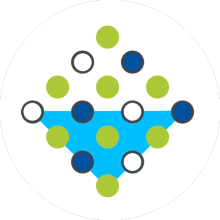Research Structure
To tackle the scientific challenges, the research projects are grouped into four project areas:
- Free flow and porous-media flow
- Fracture propagation and fluid flow
- Fluid-solid phase change
- Benchmarks, computing and visualization
Project Area A, Project Area B and Project Area C are mainly driven by fundamental scientific questions that arise from engineering applications and by the need for thermodynamically based theories, model concepts, mathematical and numerical methods. Project Area D tackles several common challenges that arise from questions posed in Project Area A to Project Area C. All project areas contribute to and are embedded in an integrated environment of experiments, modelling, mathematical and computational methods.
An additional organisational structure are three task forces to support the broad vision of SFB 1313 and help projects work together beyond individual collaborations. They faciliate and foster the exchange between the different project areas. The three task forces have the following topics
- Experiments
- Software and Data
- Mathematical and computational models
Experiments
So far, experiments have struggled to accurately disentangle relations between porous-medium, interface and free-flow properties and processes. Hence, application scenarios often suffer from uncertainty in characterising natural heterogeneities and from uncontrollable and highly dynamic boundary conditions. The same scarcity of data also leads to an inability to test and refine underlying theories in fundamental research. Therefore, we will conduct carefully controlled multi-scale experimental investigations that include the interfaces and link the pore scale to the REV scale. We will use these experiments to identify the relevant processes on the different scales and to test and validate the new model concepts.
The experiments within Project Area C focus on porosity-permeability relations. In particular, dynamic changes in porosity and associated changes in pore-water-velocity distributions with MRI and XRCT in order to determine permeability changes will be investigated.
Experiments on salt precipitation during evaporation and Microbially-Induced Calcite Precipitation (MICP) in porous glass-bead systems will be carried out using micro-fluidic cells in collaboration with the Center for Biofilm Engineering, Montana State University, Bozeman, USA.
Investigating the effects of injecting bone cement into a porous structure will be done in close collaboration with the AO Foundation, Davos, Switzerland. All experimental studies will serve as the driving force behind developing methodologies for the image-based estimation of pore parameters and validating the newly derived upscaling concepts for effective REV-scale parameterisations.
Benchmarks, Computing, Visualisation
Benchmarks need to be developed to assist in the validation of the new and often highly complex computational models which are developed within this SFB. Many projects require an extension of the software capabilities. In order to be beneficial to the scientific community these extensions should be achieved in a sustainable manner with appropriate re-use of already existing software packages, made accessible to the community on an open-source basis. Additionally, many projects and experiments need advanced visualization techniques adapted to the complexity of fine-scaled geometries in multi-physics multi-scale problems.
Management
Prof. Dr.-Ing. Rainer Helmig
University of Stuttgart
Faculty of Civil and Environmental Engineering
Institute for Modelling Hydraulic and Environmental Systems
Department of Hydromechanics and Modelling of Hydrosystems
Pfaffenwaldring 61
70569 Stuttgart
Germany
Prof. Dr. Christian Rohde
University of Stuttgart
Faculty of Mathematics and Physics
Institute of Applied Analysis and Numerical Simulation
Pfaffenwaldring 57
70569 Stuttgart
Germany
The Executive Board is composed of the Spokesman, the Deputy Spokesman, the four Project Area Leaders, and one elected representative of the doctoral researchers:
Any person who belongs to one of the participating universities or other research institutions and has demonstrated in the research field of SFB 1313 the ability to conduct independent scientific research (generally after completing a doctorate) may apply for membership in SFB 1313 and join the General assembly.
An Advisory Board of three internationally recognized experts has been set up. The tasks of the board include the quality management of the research projects as well as the strategic management and scientific support of the SFB 1313 project areas.
The members of the Advisory Board are:
- Beate Spinner: Administrative Office
- Katharina Heck (M. Sc.): Management
- Sina Ackermann (M. Sc.): Management, Coordinator Integrated Research Training Group (until June 8, 2020)
- Simon Emmert (M. Sc.): Management, Coordinator Integrated Research Training Group (from June 8, 2020)
- Patrizia Ambrisi (M.A.): Public Relations & Science Communications
- apl. Prof. Dr.-Ing. Holger Class: Administration of Finances
- David Werner: IT Management
Contact



